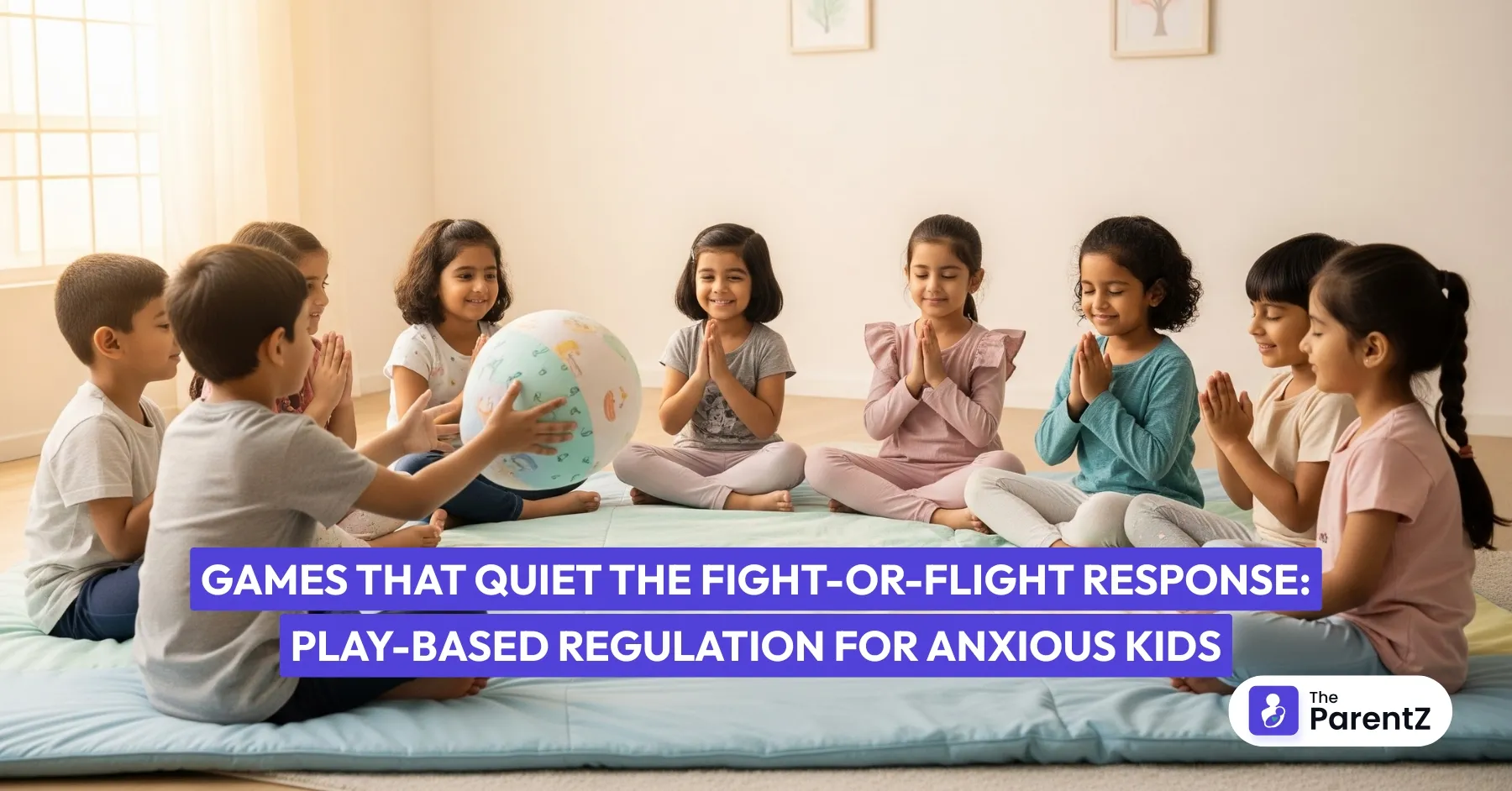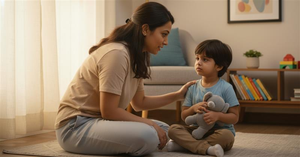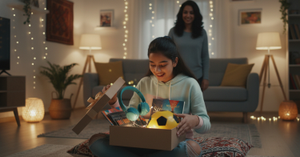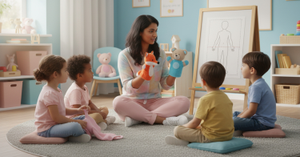Your child's hands are cold. Their breathing is shallow. They're saying their stomach hurts again, but you know it's actually anxiety talking. And you're standing there, wanting desperately to help, but "just calm down" isn't working. It never does.
You can't logic your way out of anxiety. When your child's fight-or-flight response kicks in, their rational brain has basically left the building. But there's something that works better than talking, better than reasoning, better than breathing exercises they won't do.
Play.
Why Games Work When Your Words Don't
When anxiety hits, your child's body genuinely believes there's danger. Their nervous system doesn't know the difference between a tiger and a spelling test. The alarm goes off either way.
Games work because they send a powerful message to that panicked, nervous system: "We're playing. There's no danger here." You can't play and be in survival mode at the same time. It's physically impossible.
And the best part? Your kid doesn't have to "work" on their anxiety. They just get to play.
Games That Bring Them Back to Safe
1. Bubble Breathing
If your child shuts down when you mention "breathing exercises," get a bottle of bubbles instead. Hand it to them. Say nothing about anxiety or calming down.
To blow bubbles, you have to breathe out slowly. You just do. Your child will naturally regulate their breathing while trying to make the biggest bubble or create bubble mountains. No lecture needed. Works every single time.
2. Statue/Freeze Dance
Put on their favorite music. Dance around the kitchen together. When you pause the music, everyone freezes. This teaches their body the difference between tension and release, but all they know is they're being silly with you.
The physical movement helps discharge that anxious energy, and the freezing part teaches body awareness. Plus, it's really hard to spiral into worried thoughts when you're frozen in a ridiculous pose.
3. Chidiya Udd (Bird Fly)
This Indian game is anxiety gold. You say "Chidiya udd!" (bird fly) and everyone raises their hands. Then "Haathi udd!" (elephant fly) - and anyone who raises their hands is out because elephants don't fly.
It sounds simple, but it anchors your child in the present moment. They can't be worrying about tomorrow's presentation when they're trying to figure out if butterflies fly. Play this in the car, while waiting for appointments, anytime you see that anxious look creeping in.
4. Slow-Motion Challenge
"Bet you can't walk to your room in slow motion." That's it. That's the game.
Slow movement forces slow breathing. It's impossible to move in slow motion while taking quick, anxious breaths. Make it silly. Race to see who can be slowest. The concentration it requires pushes anxious thoughts aside.
5. Antakshari (Song Chain)
Sit together and take turns singing songs; each song has to start with the letter the previous song ended with. The rhythm of singing regulates breathing naturally. The social connection of doing it together tells their nervous system they're safe.
And honestly, it's hard to catastrophize about school tomorrow when you're trying to remember a song starting with 'ka.' Works in Hindi, English, or mixed; whatever songs your family knows.
6. Five Senses Grounding
When you see panic rising, turn it into a game. "Quick - find five blue things in this room!" Then four things they can hear, three things they can touch, two things they can taste, and one thing they can smell.
This isn't a chore, it's a challenge. It grounds them in the present moment without feeling like an anxiety exercise. Their brain literally can't panic and play detective at the same time.
7. Marble Rolling
Keep a smooth marble or small ball handy. When anxiety hits, pull it out. Roll it on the table, create marble mazes with books, roll it palm to palm between you and your child.
The smooth, repetitive motion is naturally regulating. It gives their hands something to do. And sometimes, the best conversations happen when you're both just sitting there, rolling a marble back and forth.
8. Dumb Charades
Act out movies, animals, or actions without speaking. When your child is anxious about something specific, this gives their brain a complete break. They can't act out a dancing elephant and worry about their friend drama at the same time.
The laughter helps too. Laughter and anxiety can't coexist in the body.
9. Body Scan Story
Lie down together and tell a story where you tense and relax different body parts. "The cat arches its back (tense shoulders), then melts into a puddle of fur (relax)." Make it goofy. Let them create the story.
They're learning to release physical tension without it feeling like homework.
What This Really Looks Like
These aren't one-and-done fixes. Your child won't play freeze dance once and never feel anxious again. But here's what will happen:
When you pull out bubbles instead of giving another pep talk, they'll feel understood. When you challenge them to slow-motion walking instead of asking "what's wrong" for the tenth time, they'll feel relief. When you sit down for Antakshari, when you both know anxiety is running high, they'll feel safe.
You're teaching their nervous system that anxiety doesn't have to be fought or fixed. It can just be calmed, gently, through play.
Conclsuion
We, as parents, want to fix our kids' anxiety. We want to sit them down and help them problem-solve or rationalize their fears. But when that fight-or-flight response is activated, their thinking brain isn't online. Problem-solving can wait.
First, we need to help them feel safe. Then we can talk.
These games are proof that you don't always have to say the right thing. Sometimes you just need to play the right game.








Be the first one to comment on this story.